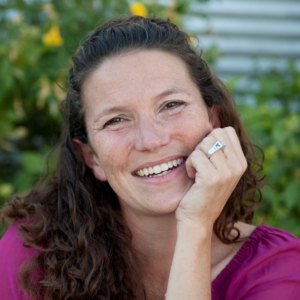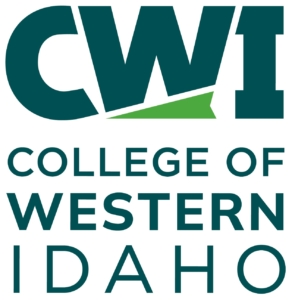Artificial Intelligence – AI and Learning Without Scars
Artificial Intelligence – AI and Learning Without Scars
At Learning Without Scars, we are usually ahead of the curve when it comes to technology. Our curriculum designer, Caroline Slee-Poulos, likes to joke that we were on Zoom before it was “cool.” When it comes to AI, the situation is the same. Ron Slee is giving an update this week on all things LWS with, “Artificial Intelligence – AI and Learning Without Scars.”
In our July 1st, 2024, Newsletter Ross Atkinson told us about how we have been using AI and where it will take us with this wonderful advancement in technology. As with most technological changes they create Paradigm Shifts. Methods and Policies and Systems must change. Sara Hanks eloquently covers Continuous Improvement for us through her blogs and podcasts. If you have read her blogs or listened to her podcasts, well, you don’t know what you are missing.
www.learningwithoutscars.com
I wanted to talk to you with this blog about how at Learning Without Scars (LWS) our goal is to provide the industries we serve with a platform of information. That is what we attempt to provide under our Resources tab. There you will find our blogs, podcasts, newsletter, reading lists and today I am pleased to share with you a new option – Film Clips. More on that shortly.
At our core, our purpose with the company is that we are a School. We offer more than seventy academic credits at Technical Schools, Community Colleges and Public and Private Universities worldwide. We are the only IACET accredited business in our industry. We are enormously proud to have this status for our students, Centers of Excellence, Industry Associations, and Original Equipment Manufacturers.
One of the most important aspects of our school is our Job Function Skills Assessments (CSA’s). We have created very comprehensive multiple-choice assessments to measure the skills and knowledge of the employees doing the work for dealers, distributors, associations, and manufacturers.
One more thing, before I get into AI. In the last couple of weeks, a new font has been created to help people with Dyslexia to be able to read written documents and books like a more traditional person. This to me is a HUGE development. As time permits, we will address this font for our learning material.
Artificial Intelligence – AI.
It is becoming the latest craze, almost a fad. Believe me when I tell you it is not a fad. It is here to stay and will continue to evolve in ways that we can only imagine.
ChatGPT is very new. It was created by an artificial intelligence company in 2022. Perhaps as old as two years. We are now at ChatGPT 4o. OpenAI was a research company started as a non-for-profit in 2015 and changed to for-profit in 2019. There is still a free version as well as a premium version that you purchase.
At LWS we use AI in a variety of ways. We convert word documents to audio tracks; we use it to translate from one language to another. That works for one-hundred and thirty different languages. We use it to create subtitles that allows us to be in compliance with the American with Disabilities (ADA) compliant. We use it to provide transcriptions of our podcast and create social media pieces. We use it to create avatars, what we call “HUMANARS.” ( a word we have coined)
Ross Atkinson, who directs us in all aspects of technology, keeps us out on the leading edge of technology for the education world. He is truly an indispensable part of our present and future.
Our use of Humanars is expanding.
We create film clips for social media. Ross created an entry point on our website this past weekend. We primarily intended humanars for our classes. Caroline Slee-Poulos, my incredibly talented daughter, coordinates everything we do from a learning perspective, our accreditation, our learning management software, our reporting and commercial interfaces. She has an extremely critical function to perform for us. Without her I don’t think I would have been able to transition our learning products from me being the “Sage of the Stage” teacher in front of a class to all products completely on the internet.
Our classes are undergoing a complete redo. We have had the two foundations of teaching in place since the beginning: Lectures and Homework. We have followed traditional education parameters for every hour of lectures the class has two hours of homework. In fact, we exceed that and always have. Check out our reading List on the website.
Each adult education and workforce development class consist of about twenty segments, they average about fifteen minutes each. Each segment is presented by humanars. Our humanars are male and female of varying ages and from various regions of the world as represented by the Olympic Rings. We have a pretest, to measure skills and knowledge at the outset of the class and a final assessment. Each class also includes surveys to obtain student evaluations of the classes as well as suggestions for improvement. as well as a few surveys. Each segment ends with a quiz. At the conclusion of our classes the student will have a very comprehensive understanding of the subject matter. We call all our classes Subject Specific Classes.
Now I would like to introduce you to a new member of our team. Joudeb Chakrboty, Co-founder of Virtualess IT is now driving all our social media. He is evaluating everything we do on the social media front, and we welcome him to LWS. He has asked me to provide him with five blogs a week and two film clips a week. (Note: As if I needed more work.)
So, at LWS we are becoming more and more influenced by AI.
And don’t forget CoPilot, from Microsoft or Claude, created by Anthropic. Or there is Gemini from Google or Meta AI from Facebook. The space is getting crowded.
The world keeps changing. Adapt and adjust or be left behind.
The Time is Now.





